Rhodes, Ted’s and my first stop in Greece on the BT, is one of the southeastern Greek Islands near Türkiye (see the map below). When I looked at the map and saw all those islands in the Aegean Sea–227 of over 700 islands are inhabited–it made perfect sense that Ted and I saw so many ferry lines and boats at the five ports we visited on the shores of the Aegean Sea–Rhodes, Crete, Athens, Olympia, and Corfu.
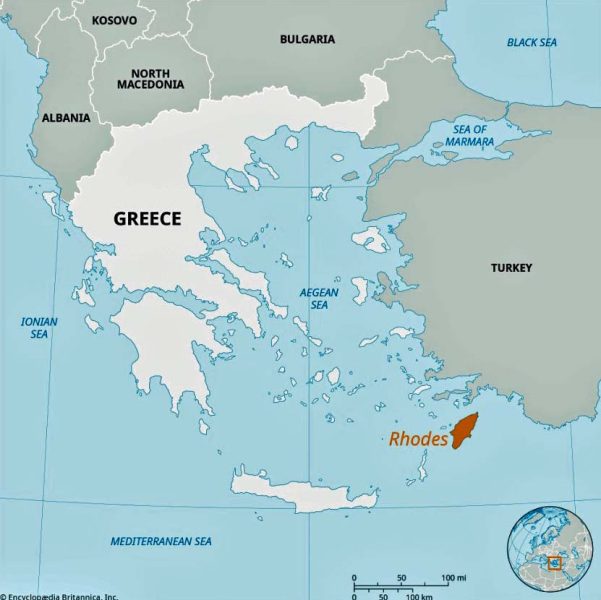
Rhodes’ historic quarter is Europe’s largest active medieval town, although the island is probably most famous as the site of the Colossus of Rhodes, one of the Seven Wonders of the Ancient World. The Colossus was a statue of Helios, the sun god, and stood beside the harbor. It was about 108 feet tall–the tallest statue in the Ancient World. Experts affirm that it was technically impossible for the Colossus’ legs to have spanned the harbor entrance, as it is often shown in drawings. If that were true, the statue would have fallen over. It took 12 years to build the statue, and it was destroyed by an earthquake 54 years later (around 225 BC) when it collapsed at the knees and fell onto the land beside it. The remains lay on the ground for over 800 years and were so impressive that people travelled to see them. It was said that 900 camels were needed to remove the debris from the area.
Rhodes is called the “Island of the Knights” because the Knights of St. John ruled it for two centuries (1310-1522) and made it a model of the medieval European settlement. The Street of the Knights, the main street in the Old City, is paved with colorful cobblestones, and is one of the best-preserved medieval streets in Europe, with shops along both sides of it.
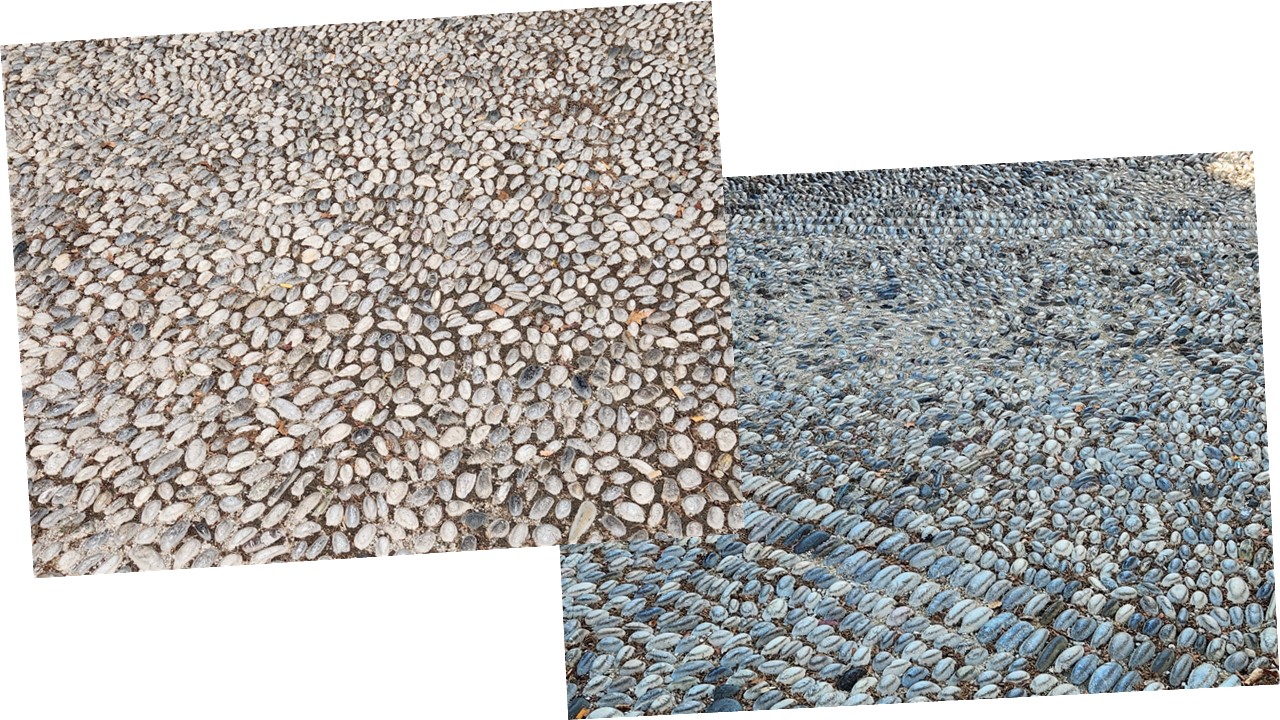
The first significant building we saw on the Street of the Knights was the Church of the Virgin of the Burgh. (Was there a contest to come up with the longest possible name for the church?) The church was ruined by World War II bombardments, so only three apses remain. FYI in case you don’t know, an apse is a semi-circular area with a half-dome ceiling, like some churches have in the front of the sanctuary for the choir. The church has been partially restored but is no longer in use for worship. The photo below shows the entrance to the church, with the remains of the main building on the left.

The Street of the Knights ends at the largest structure on Rhodes: the Palace of the Grand Master of the Knights of Rhodes. (Is everything on the island required to have a long name?) The palace was built on the foundation of the temple of the sun god, Helios, and in medieval times, served as the residence of the governor and as the administrative center of Rhodes. The first photo below shows the Street of the Knights; the two photos below it show the palace.

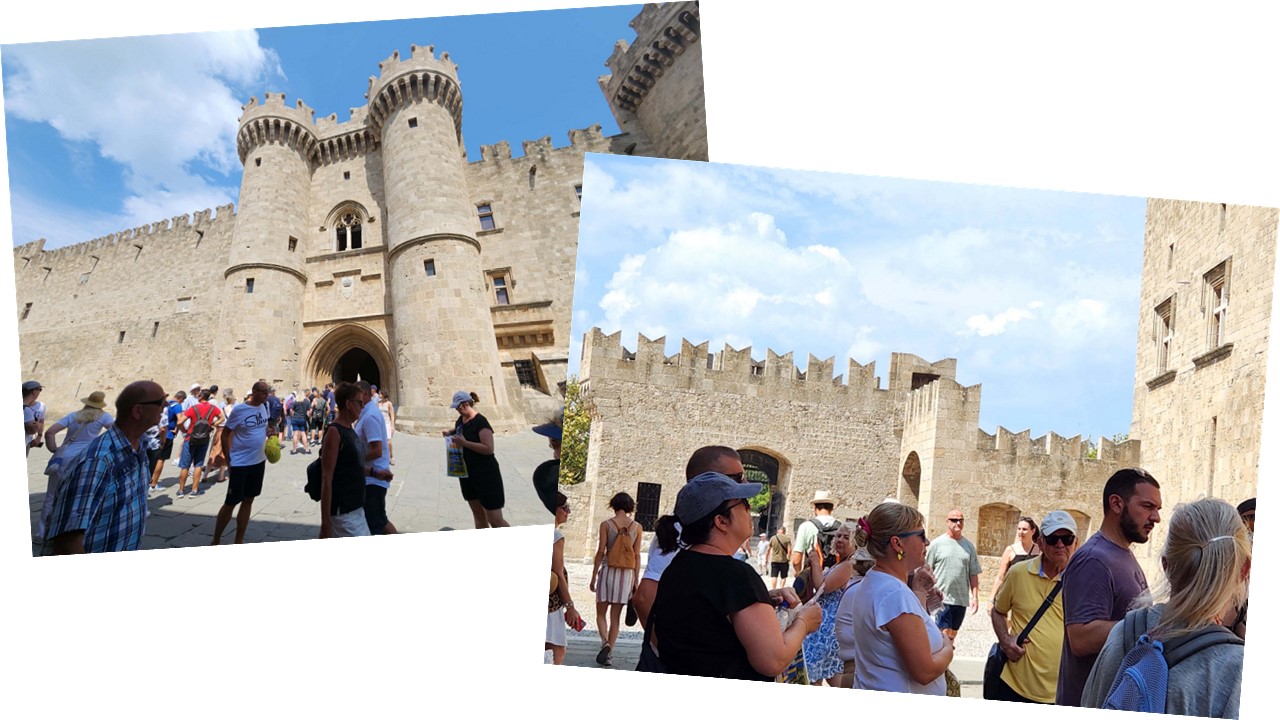
Here’s a picture of the courtyard of the Palace of the Grand Master, etc. It was grand.
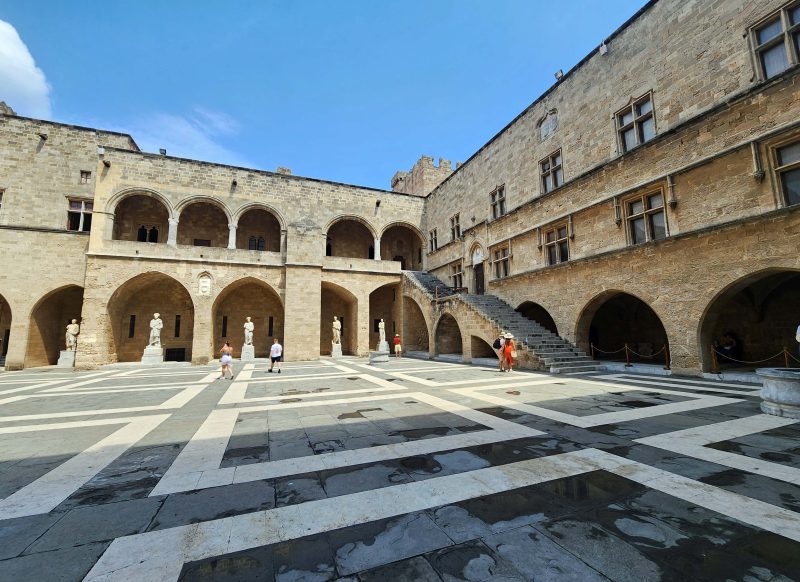
The palace had beautiful inlaid mosaic floors. I took pictures of two of them.
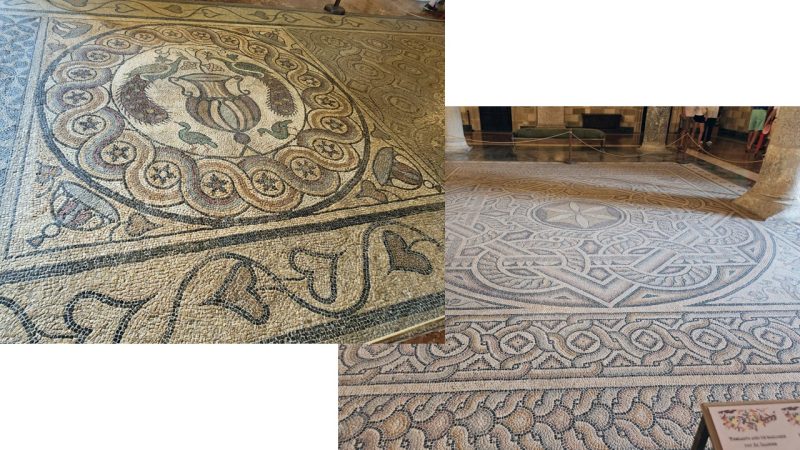
During our tour of the palace, we saw this statue of Lacoön and His Sons. Lacoön was a Trojan priest and allegedly had intercourse with his wife in a sacred temple, thus desecrating the building. To punish him, the gods sent serpents to strangle him and his twin sons, as depicted in the sculpture. Note: You can also see another mosaic tile floor.

Our last tour stop was (as always) the city market. As I mentioned in an earlier post, I’m not much of a shopper, but Ted and I enjoy walking outside in the sunshine on a beautiful day. When we’re in an unfamiliar place like Rhodes or anywhere else, there’s always the added anticipation of discovering new sights.

When we returned to our ship, we freshened up, changed our clothes, and headed for a mysterious “private event” to which we’d been invited. We didn’t know what to expect, but it turned out to be a reception to thank those of us onboard who were staying for 3 and 4 weeks of the cruise from Istanbul to Barcelona. That was about 40 of the 930 passengers, with only about a half dozen of the 40 (including us) staying for the full 30 days. The event included hors d’oeuvres and champagne, and the entire crew—managers and up—were in dress uniforms to show their appreciation for us. It was nice to spend time getting to know some of the people we’ll be mingling with for the next 4 weeks.
As our cruise progressed and we chatted with various people, it seemed like none of the “long-term” cruisers (including us) knew that the cruise was a combination of four week-long segments, with boarding and disembarkment points at Istanbul, Athens, Venice, Rome, and Barcelona. On the other hand, the “short-term” (one or two-week) cruisers didn’t know it could be a month-long cruise. Ted and I wonder if the cruise was advertised in a variety of ways—maybe an ad for four weeks and four other ads for one week each? We boarded the cruise in Istanbul and disembarked in Barcelona, but some passengers left, and others joined us at Athens, Venice, and Rome along the way.